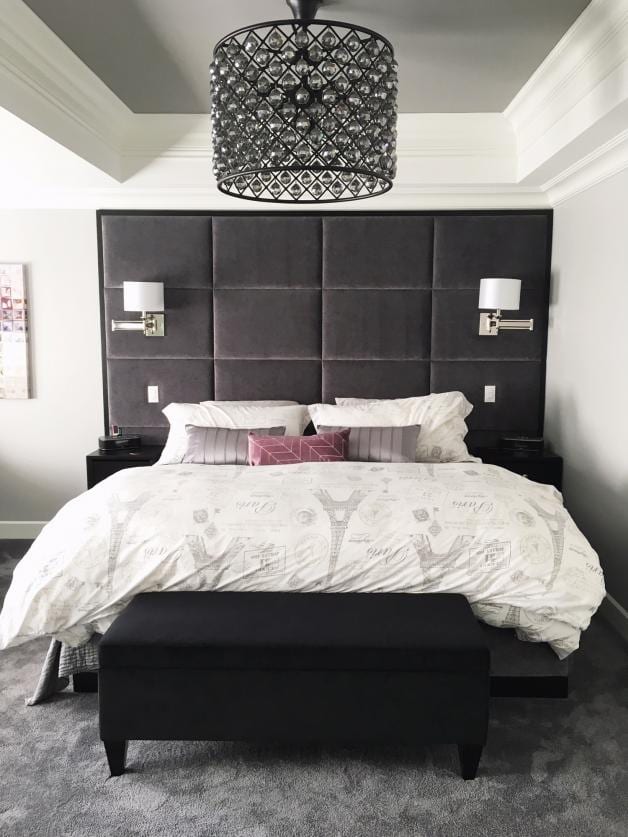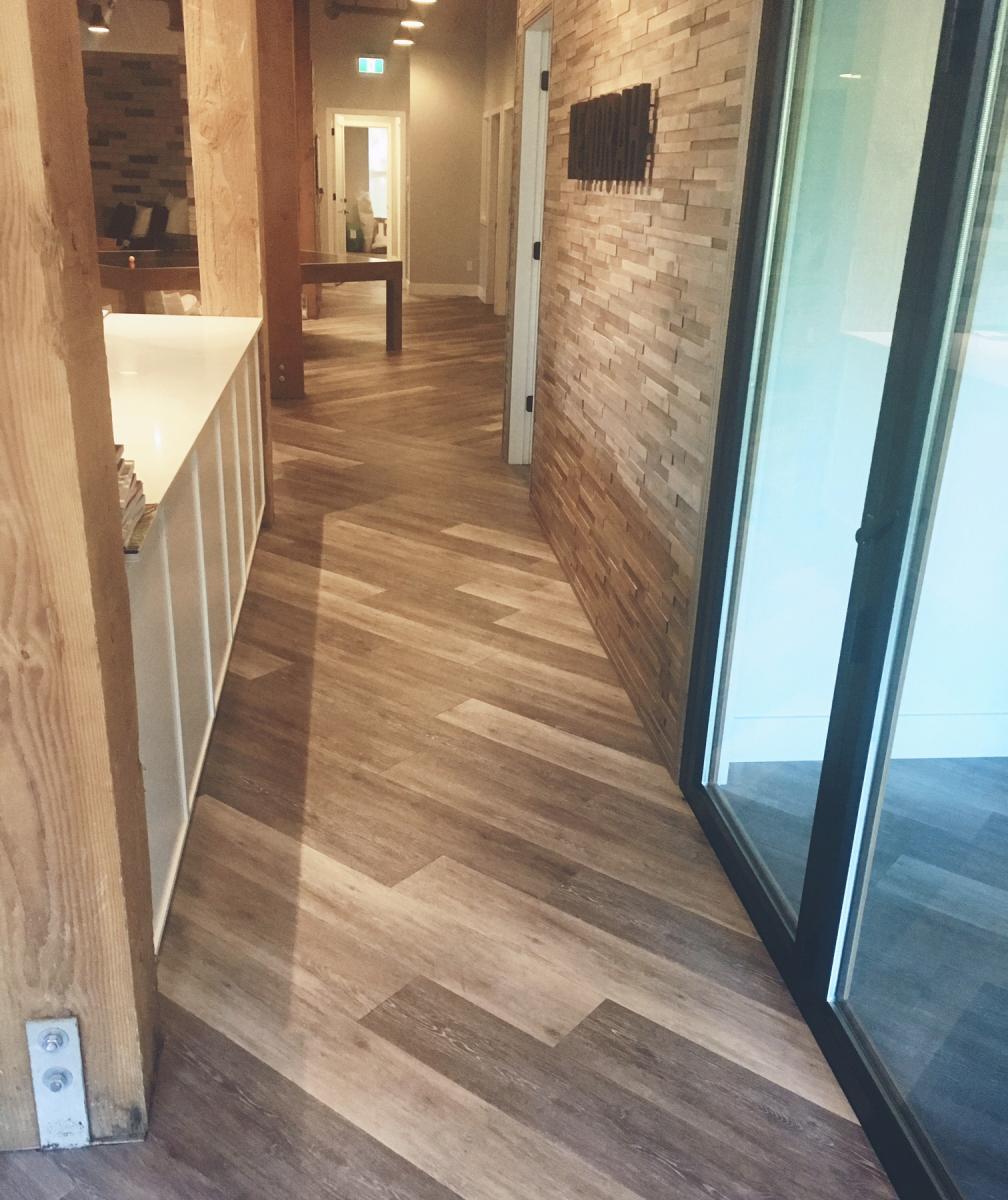
Welcome to the third and final installment in our Flooring series! We’ve already covered hardwood and tile flooring, and for this post we will go into a little more detail on carpet and vinyl flooring, as well as carpet tile, and concrete.
Carpeting
Overall we are seeing a declining interest in carpet over the last several years. As designers, we have been receiving more requests for hard surface flooring throughout our clients’ homes. This is due to a variety of reasons, but primarily allergies and hygienic reasons. However, carpet is often less expensive and can still be a great option for some areas of your home. Depending on the needs of our clients, we recommend carpet for bedrooms, theaters and basements. Carpeting stairs can be a great option for safety, as well as easier for kids and pets.
There are a few different types of carpets, and the most common choices are synthetic and wool, which both have pros and cons.
Wool Carpet
As a natural fiber, wool is a more natural eco-friendly option and tends to wear well. While the initial cost of wool is higher, it tends to last longer than synthetic. It also is naturally fire-retardant. On the downside, It can shed and be more difficult to clean, so keep that in mind when choosing wool. We usually recommend a low pile Berber if you’re choosing this option.
Synthetic Carpet
Synthetic carpet is usually less expensive than it’s wool counterpart, which makes it the more common choice for those choosing carpet. It is more stain resistant and easier to clean with steam cleaning and spot treatment. However, synthetic carpet will emit more VOC’s (gasses) so it isn’t as environmentally friendly. If you are sensitive to that, consider giving some time after installation for some of these VOC’s to dissipate.
Carpet Tiles
Carpet tiles have been gaining popularity, and can be a great option for areas of your home like a home gym (vinyl or rubber tiles are also great options), rec room or playroom. They can be fun and colorful, and fairly easily replaced if they become stained or damaged. These are also popular in larger commercial spaces like offices.
A few other flooring options that we haven’t covered yet, are vinyl plank which has been increasing in popularity and concrete which is not used as often in homes, but can be a good fit for some spaces as well.
Vinyl Plank
Vinyl plank or vinyl tile are great cost effective alternative to either wood or tile flooring. It’s durable, great for high traffic areas, and can stand up to moisture as well, which makes it great for areas like mud rooms, basements, etc. As a matter of fact, we have vinyl plank flooring in our Kenorah offices and we love it!
Some of the vinyl flooring even allows grouting, so if you want to still have the look of tile but the cost and convenience of vinyl, you can create that effect by adding grout. You can also add in-floor heating beneath vinyl flooring. With a glue down installation, you even have the option to easily replace damaged areas if needed.
Concrete
Concrete flooring can be great look for a modern industrial look. There are a lot of options including adding color, polishing and grout lines. A few things to keep in mind is that concrete can crack, and if you choose a color it can be difficult to achieve a consistent look over a large area. It can also be quite cold, so consider in floor heating or rugs to warm up the space. As concrete is heavy, if you’re adding concrete on top of a sub floor (versus on grade), you will need to ensure that it can bear the weight. Alternately, consider a light weight concrete option.
Designer Flooring Tip
If you are having different types of flooring that meet in a space (ie carpet and tile), consider transition strips so that the transition is as seamless as possible.
We hope you enjoyed this series on flooring! Feel free to leave a comment if you have any questions. Thanks for following along!





